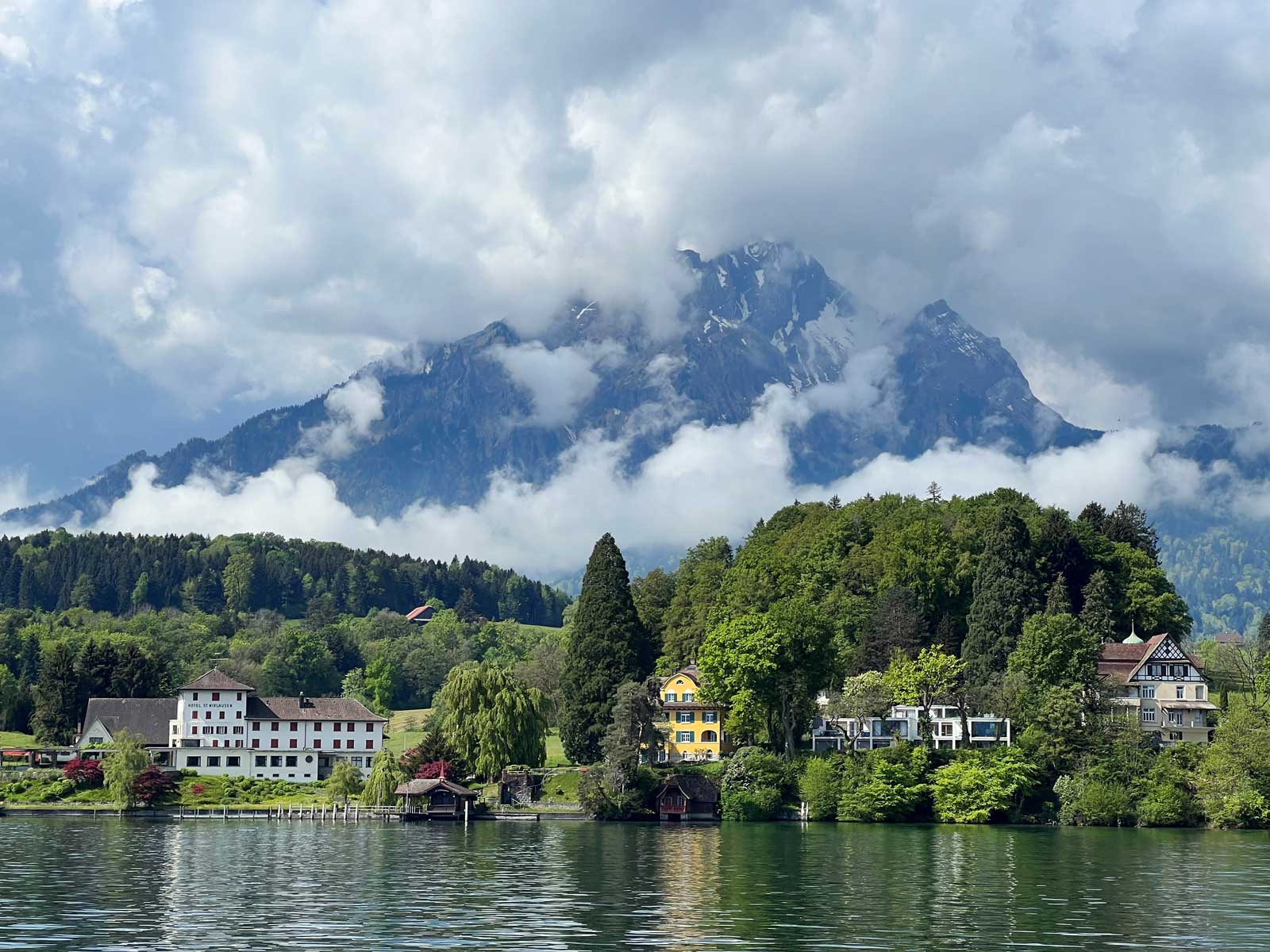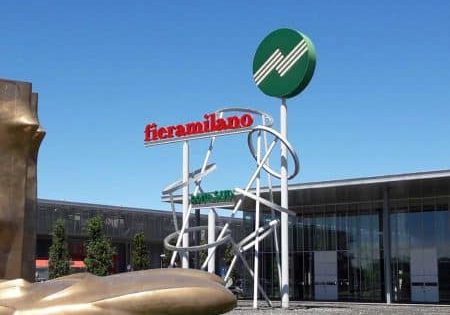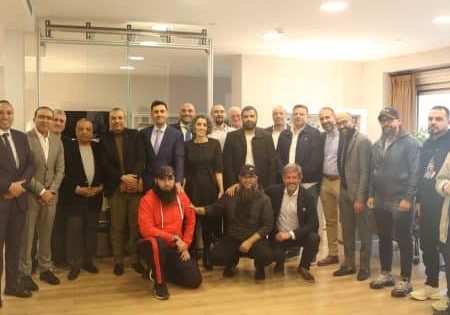With the support of VSA, the association celebrates its 25th year with intensive participation in Lucerne.
As the voice and umbrella organization of lift societies in the European Economic Zone or member countries of the European Council, the European Lift Association (ELA) organized its 25th general assembly, conference and celebration with intensive participation in the natural and historical city of Lucerne, Switzerland, on May 4-6. With the support of the Association of Swiss Lift Companies (VSA) as Swiss host, the event convened with the theme “Safety in Maintenance” in its 25th year.
The First Day
The 25th exclusive meeting was held at the Radisson Blu hotel along Lake Lucerne (also known as Four Forest Cantons Lake), as it was six years ago (2017). Executives of the Belgian European Elevator Association (EEA) met before noon, and the ELA met in the afternoon as members organized their annual general assemblies.
In the evening, guests enjoyed a lake view as they walked to the historical Grand Hotel National for the gala dinner in what was great spring weather for Switzerland. They took many photos during the walk, and met for cocktails before dinner. During the cocktail hour, VSA President Patrick Hess and ELA President Roberto Zappa gave a greeting speech and expressed their happiness about being in Lucerne again.
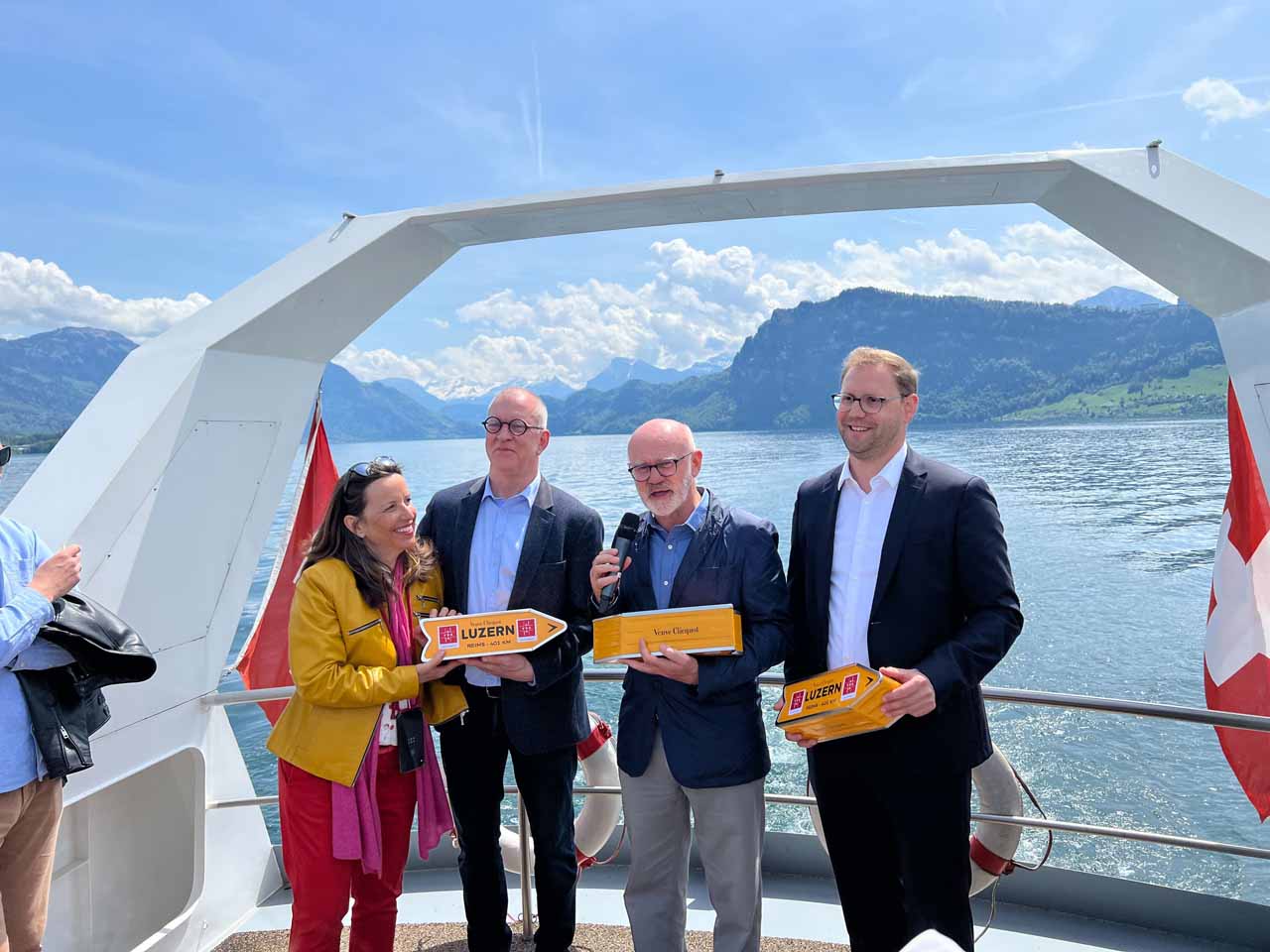
The Second Day: Conference
In the morning, Zappa gave a welcome speech and started the conference program in which leading European Union (EU) bureaucrats, committee members and members of the sector were among the speakers. Zappa began his speech by thanking VSA for welcoming everybody to this beautiful city to discuss “safety in maintenance” and provided detailed information on the program and speakers.
The first speaker on the program was Daniella Rondinelli from the European Parliament, Employment and Social Affairs Committee. Starting her speech by thanking ELA Secretary General Luca Pezzini who introduced her to the lift industry, Rondinelli stated that lifts are the most-used and safest transportation means in the world. She said:
“As a member of the European Parliament, Employment and Social Affairs Committee, I appreciate that you are discussing ‘safety in maintenance’ at this conference. Compared to other industries, your industry is closer to the EU’s goal of ‘Zero Vision,’ which strives for ‘occupational accidents with zero death’ and zero accidents for end users.”
Then, Colin Lustenhouwer from the European Economic and Social Committee (EESC) gave a speech and said:
“European politics should not continue acting without considering the competition. They need to create better environmental conditions for all the enterprises of Europe. An environmental policy, an innovation policy, access to financing and investments, vocational education, personnel having the latest technology and — of course — making our enterprises and our affairs greener are of utmost importance. European industry needs access to raw materials. We should transform our lifestyle to become energy-independent to continue our way toward production. As a person working in the energy industry, I believe Europe needs at least 100 new nuclear power stations to be constructed in the next decade, or else I assume the lights will go off.”
European Commission Senior Policy Officer Massimiliano Luca Dragoni included the following topics in his presentation: EU and digital transformation digital policy priorities, EU digital action plans, protecting and serving citizens through digital services law, regulating the EU digital market, digital goals, cybersecurity and financing, EU Cybersecurity Competence Center and its duties, Internet of Things, digital twins and predictability of mechanical behavior.
He stated the European Commission is determined to support the EU’s new cybersecurity strategy with an unprecedented investment. The commission’s aim is to reach a combined investment of up to EUR4.5 billion (US$4.87 billion) from member states and the industry, especially within the Cybersecurity Competence and Network of Coordination centers, and to ensure a large part of the investment reaches small and medium-sized enterprises.
Following the welcome speeches, Global Elevator Safety Forum (GESF) President Paulo Medeiros and ELA Statistical Committee Chairwoman Ebru Gemici took the floor in the first session of the day with the headline “Market Figures,” moderated by EEA President Wim Koster. Medeiros, making an online presentation, first provided information about GESF, which consists of Hitachi, KONE, Otis, Schindler and TK Elevator. He organized the safety guide on the industry under three titles: General Safety Rules, Lift Safety Rules, and Safety Rules for Escalators and Moving Walks.
Then, Gemici stated the Statistical Committee has been keeping occupational accident statistics involving injury or death since 2012. She highlighted that 8,700 accidents occurred between 2013-2022, according to data the committee has obtained. Approximately 75% of these accidents happened during maintenance.
The fundamental reasons revealed in the statistics were unsatisfactory methods and improper equipment use.
After a coffee break, ELA Science, Engineering and Technology Committee Chairwoman Ana Efata moderated a session called “Training & Artificial Intelligence (AI).” She left the stage to Carlos Latorre, head of Global Safety for the Schindler Group. At the beginning of his speech, Latorre stated that life does not have a “reset” button. Then, he provided examples of precautions Schindler takes to ensure occupational safety.
One of the most interesting presentations of the day was made on AI by Giorgio Manfredi from Archetype. Manfredi made a colorful introduction of himself with the help of a virtual assistant at Archetype, and he demonstrated the power and seemingly limitless capabilities of AI.
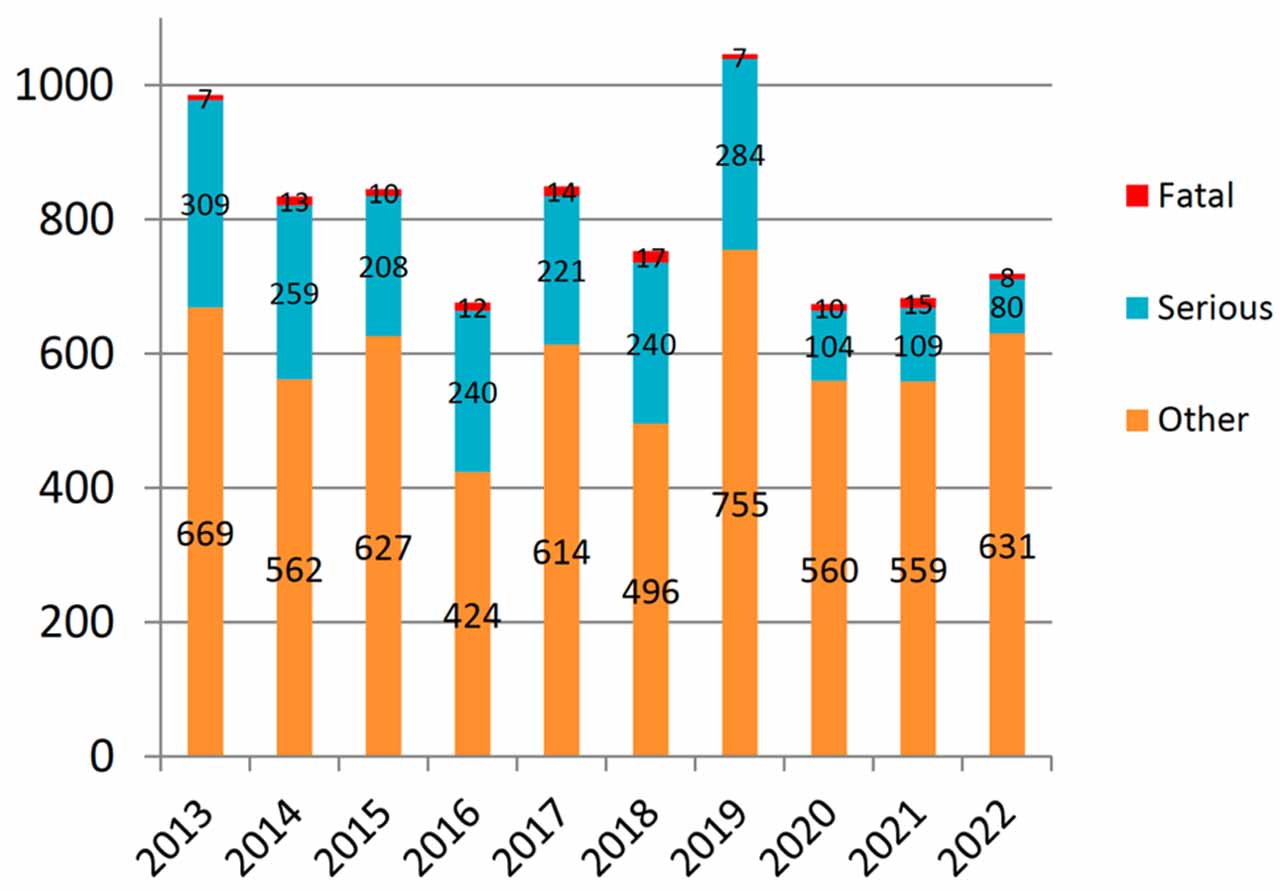
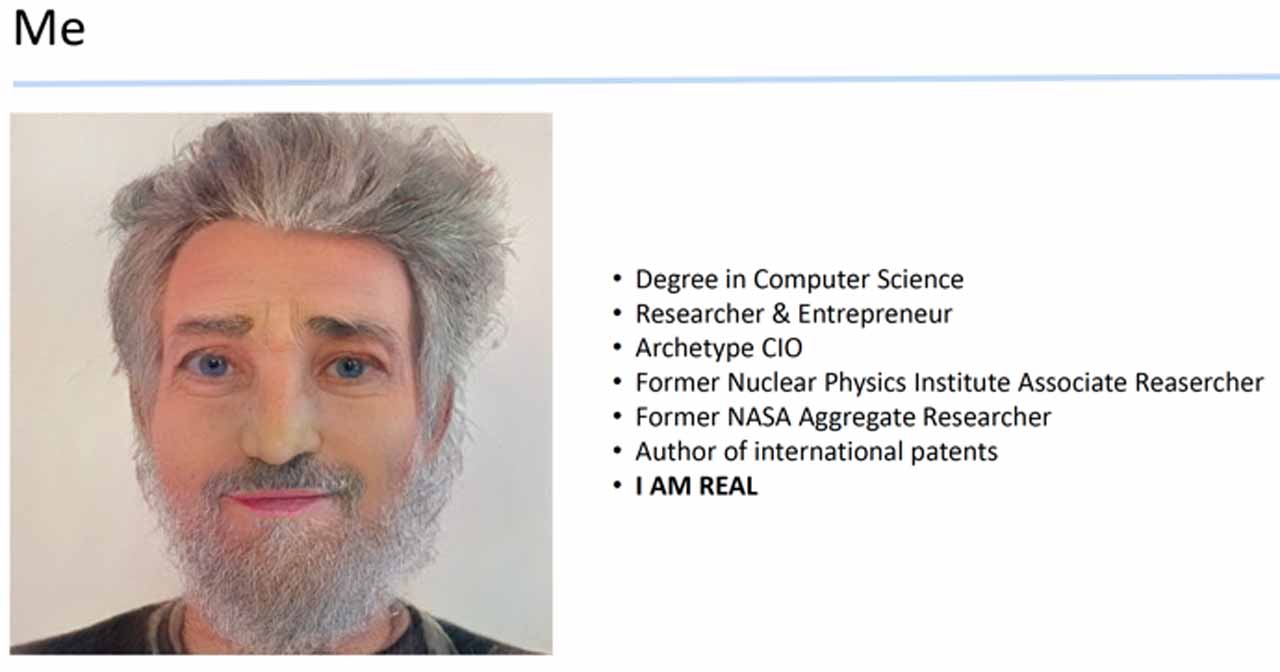
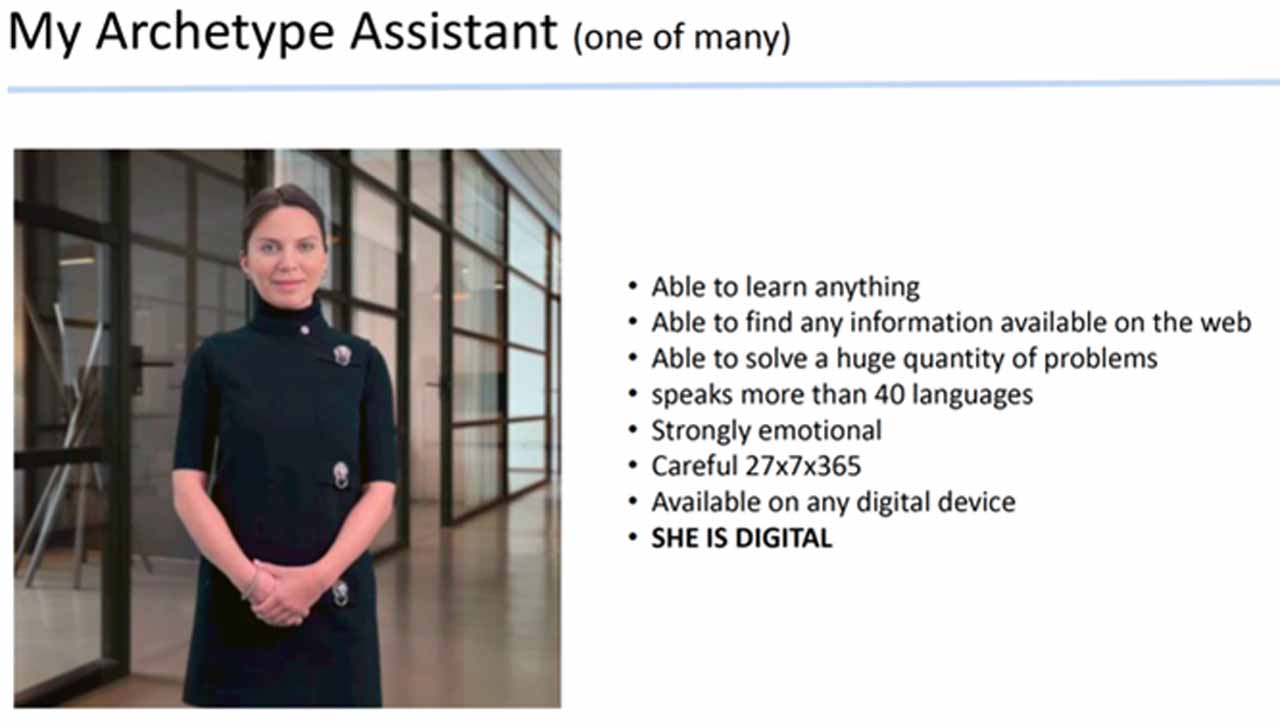
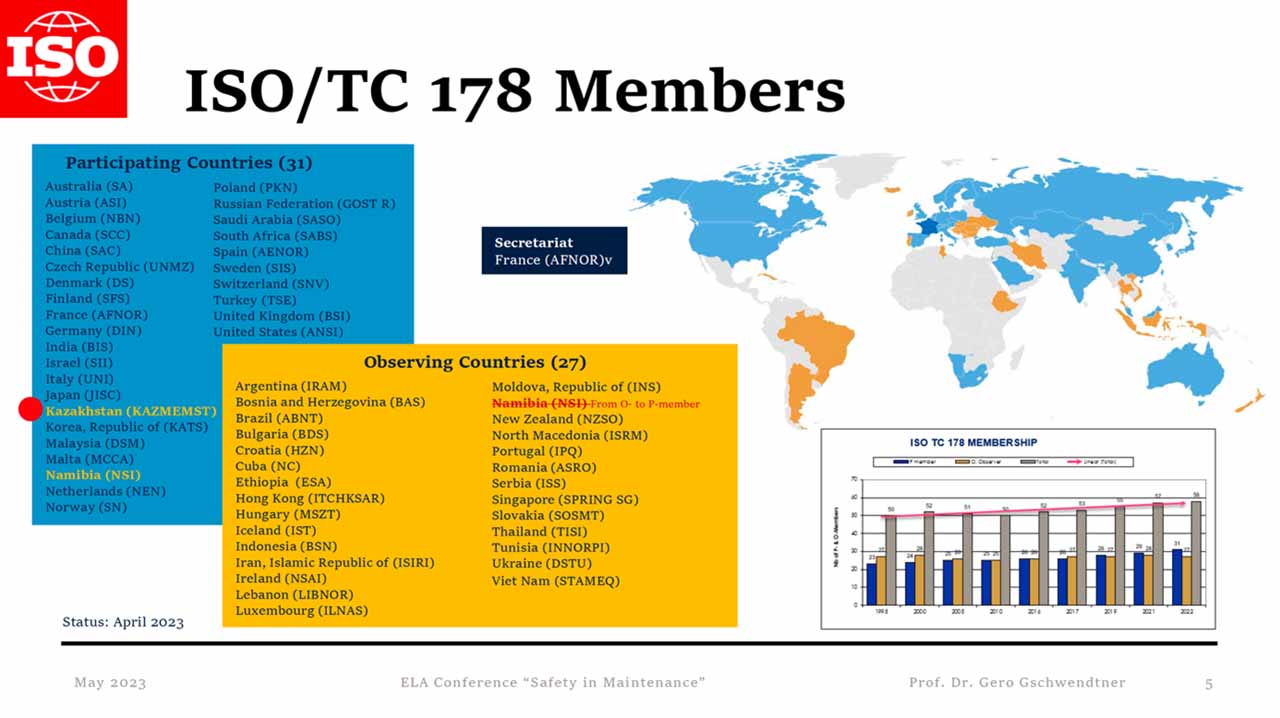
Manfredi shared information on the development of AI and how it creates algorithms through learning, and presented approaches to the possible scenarios outlined in detailed examples he provided from different industries based on usage areas.
Gero Gschwendtner from the International Organization for Standardization (ISO); Esfandiar Gharibaan, KONE vice president (VP) of codes; and ELA VP Andreas Wespi made presentations during the last session titled “Regulations & Constraints.” The presentations were moderated by Wespi.
Gschwendtner connected to the hall virtually and said ISO standards published as of the end of 2021 had reached one million pages in English and French languages. He also talked about ISO’s 2030 strategy and goals. He provided information about the ISO/TC 178 Committee and its membership, which represents the lift and escalator industry.
Moreover, Gschwendtner provided information on the Working Groups (WG) of ISO/TC 178 and shared the roadmap and developments of ISO-8100 standards, which are intended to eventually become effective across the world.
Gharibaan then took the floor to talk about the activities of the CEN TC 10 (lifts, escalators and moving walks) WG. Gharibaan described the safety progress achieved thanks to EN 81-1 — which first went into effect in 1978 — to the present day, illustrated in Figure 1.
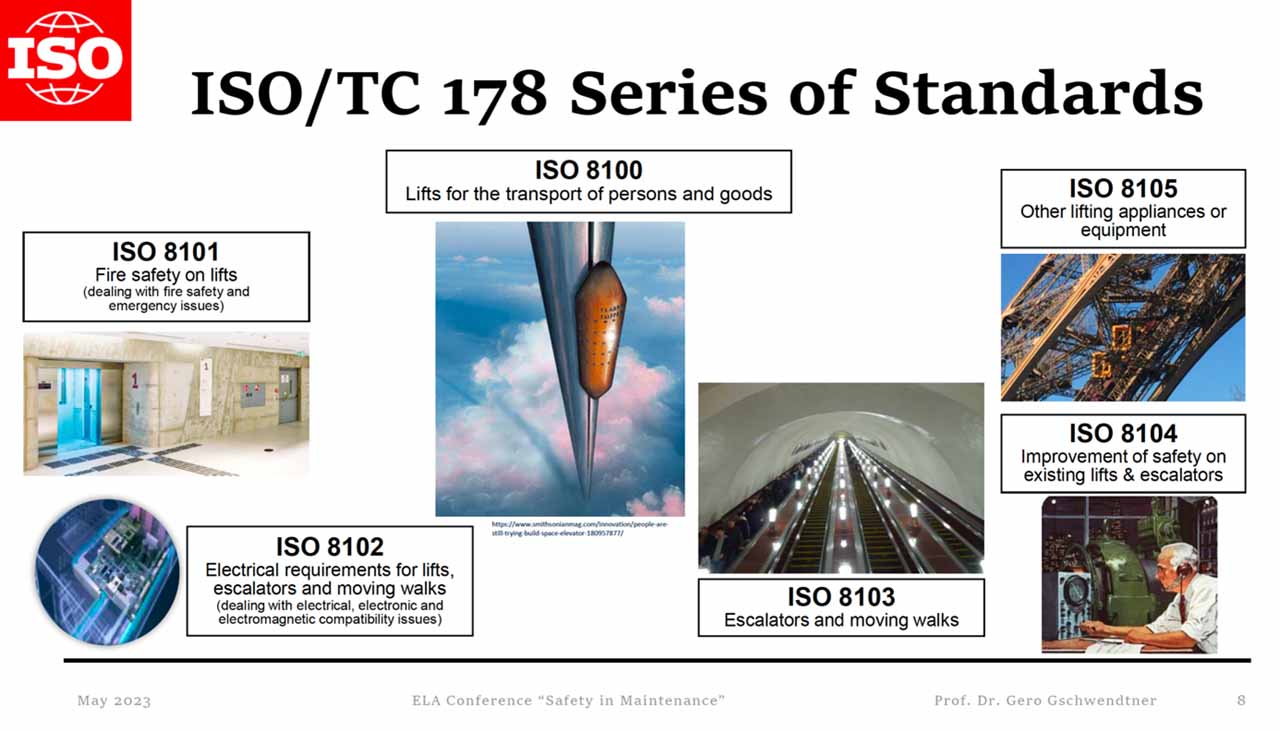
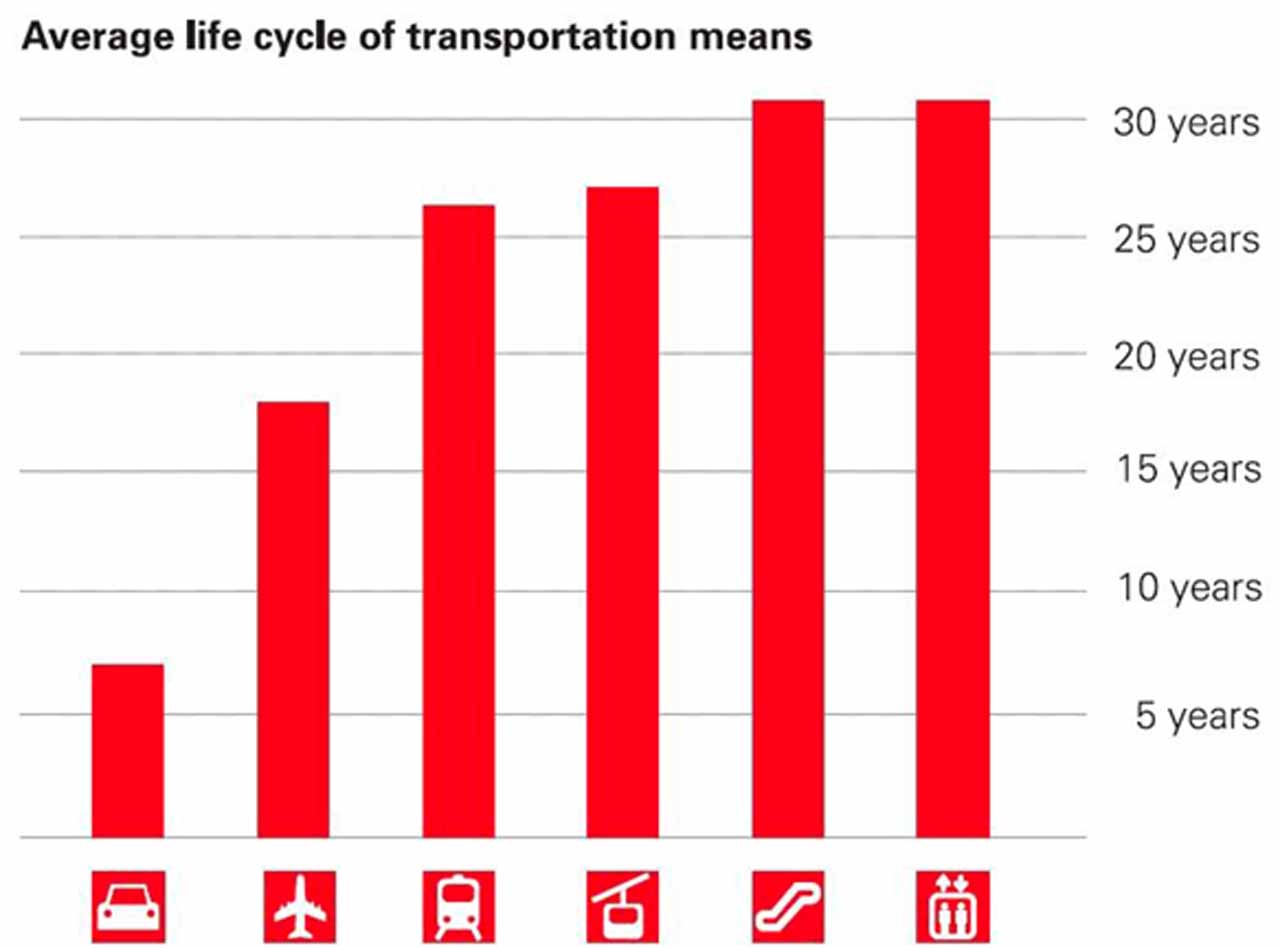
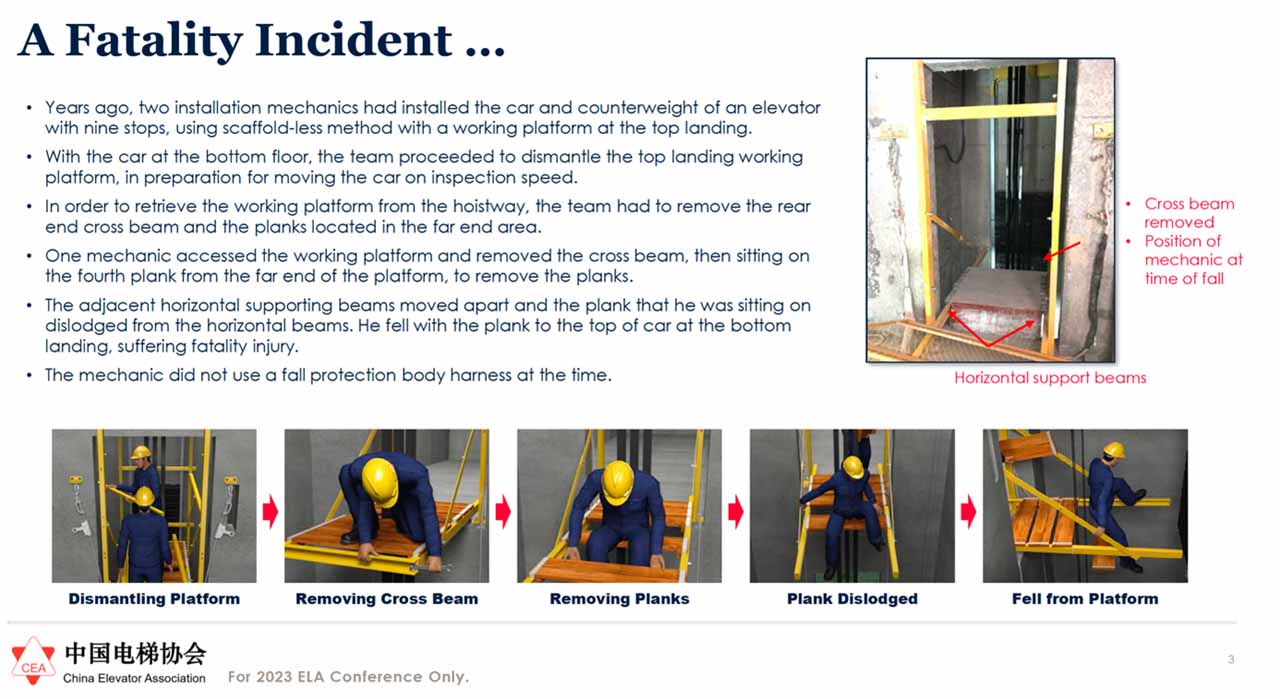
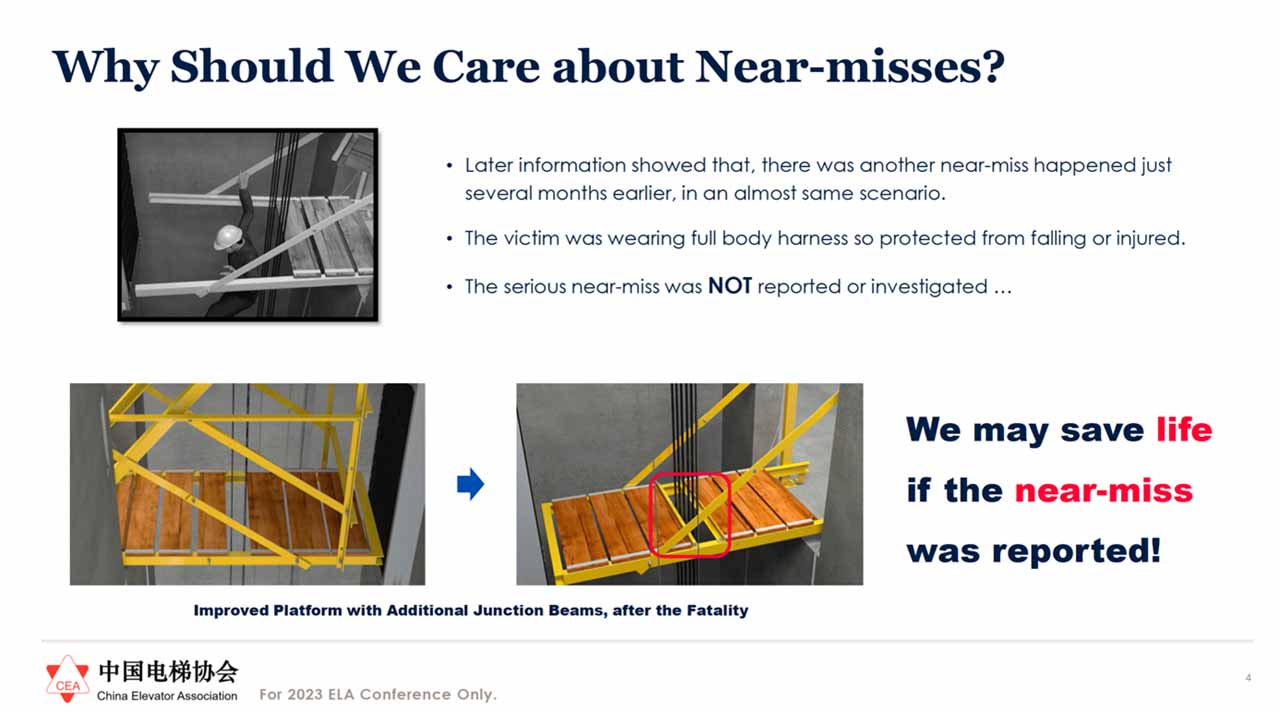
Following lunch, the two guests of the day’s last session, themed “The Global Perspective,” made their presentations via a virtual connection from the Far East. Graham Worthington, the first speaker and president of the Pacific Asia Lift and Escalator Association, elicited smiles throughout the hall as he connected from his little cabin on a cruise ship in the middle of the Pacific Ocean. Worthington stated that today, Asia Pacific countries are home to a great share (16%) of the total 3.5 million lifts worldwide. Observing that 40% of this inventory is 25 years old and only a small portion of it can be modernized, Worthington said both end users and workers, unfortunately, encounter accidents involving injury and death. He said the most longstanding transportation means used by people in daily life is the lift. This can only be maintained, he said, through regular maintenance and control.
The last presentation of the day was made by Liu Jianwei, an expert from the China Elevator Association (CEA). Jianwei started his presentation by talking about the Heinrich pyramid and showed step-by-step how an accident with serious injuries occurred in China years ago, emphasizing the importance of safety.
After a busy and effective program, all the guests met for dinner at the hotel, where they had a chance to talk about the latest industry developments.
The Third Day
The third-day weather, which was checked frequently earlier, transitioned from cloudy to sunny and made everyone happy before the boat trip. With the sun shining on the morning of March 6, the whole group walked from the hotel to the boat. With fine weather, guests had the opportunity to relax and chat during the two-and-a-half hour Lake Lucerne boat trip, sponsored by Cobianchi AG and CEDES, both headquartered in Switzerland. Celebrating their 25th anniversary on the boat, ELA and VSA management presented symbolic gifts to both sponsoring companies.
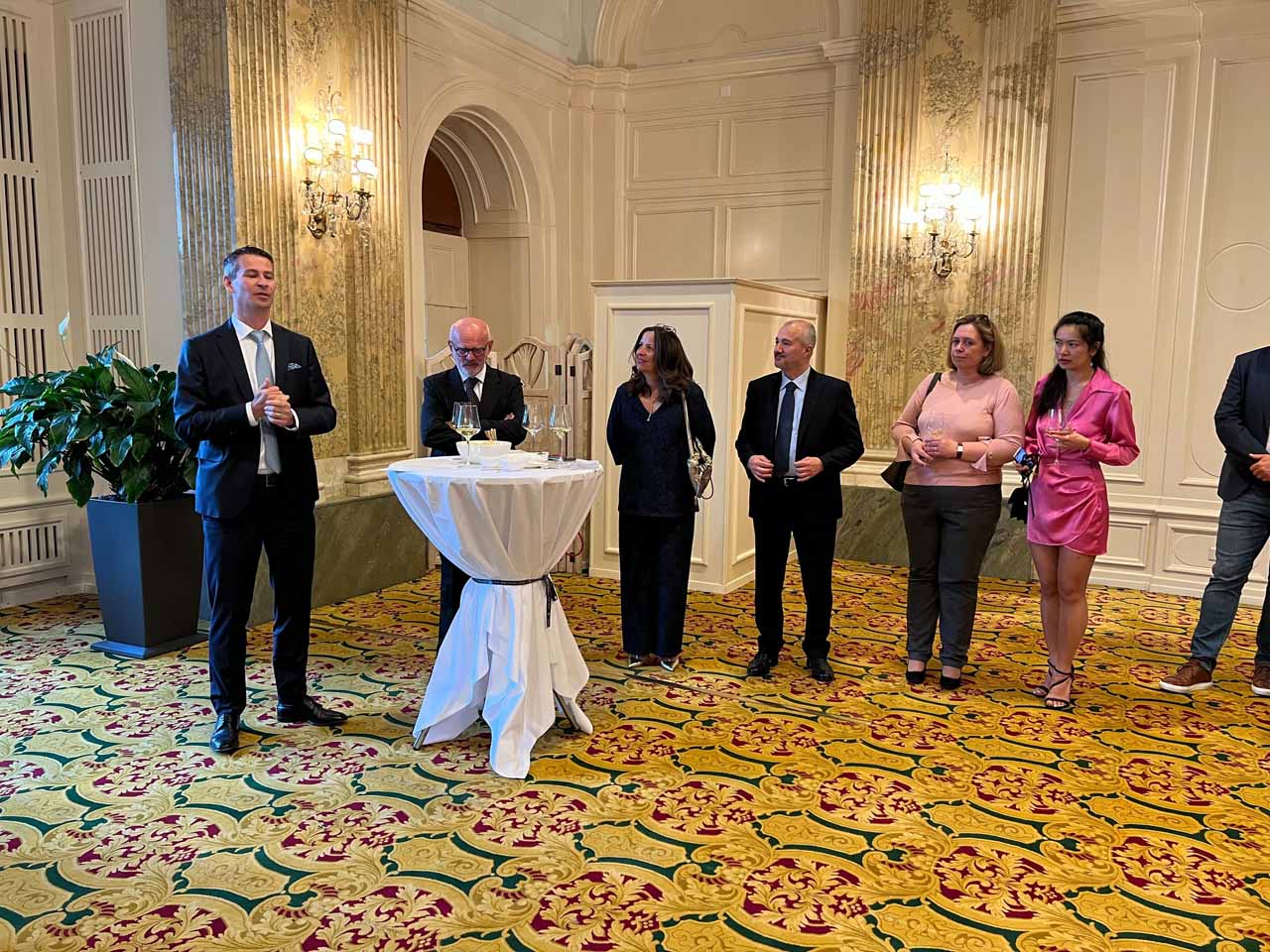
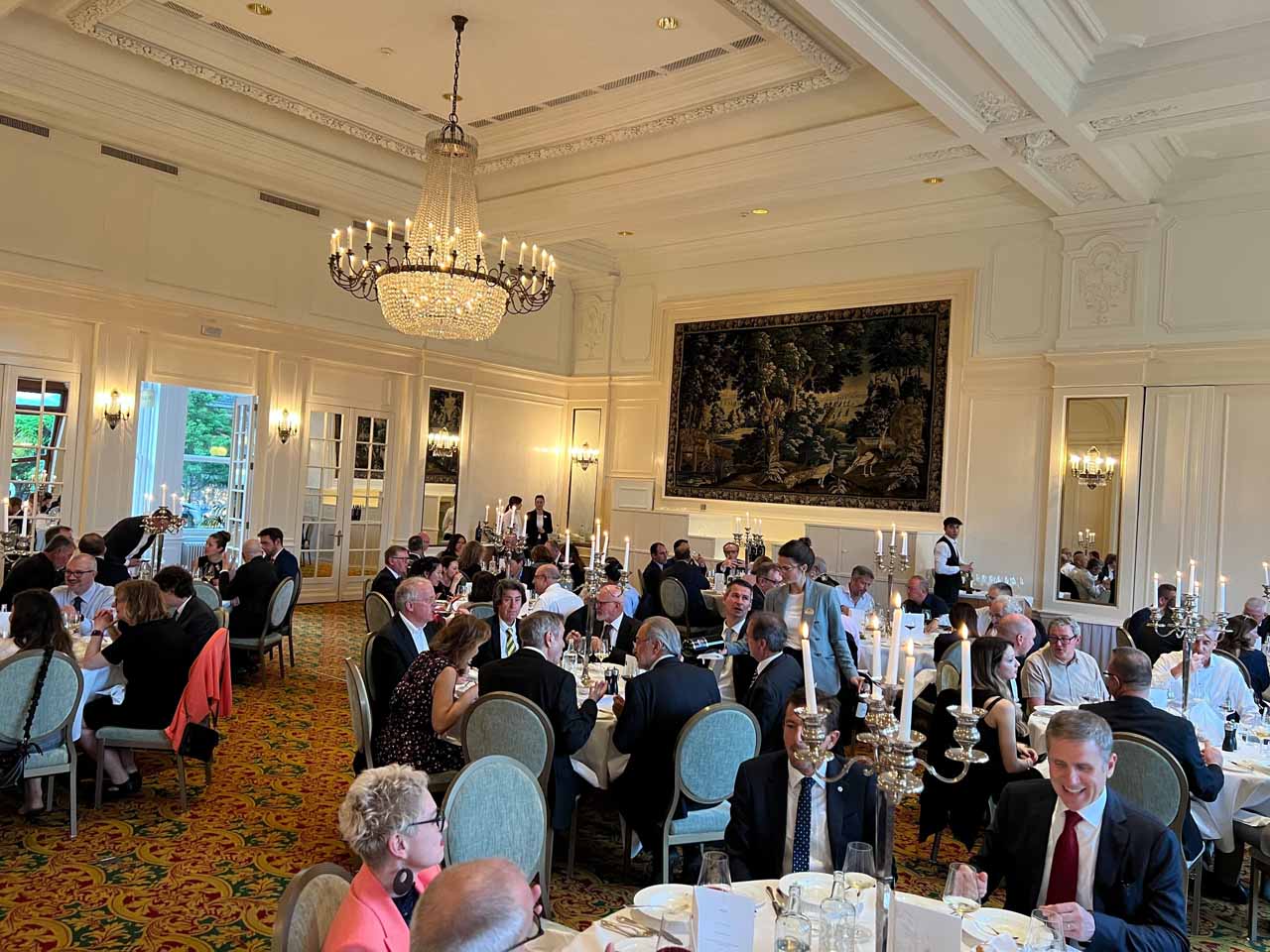
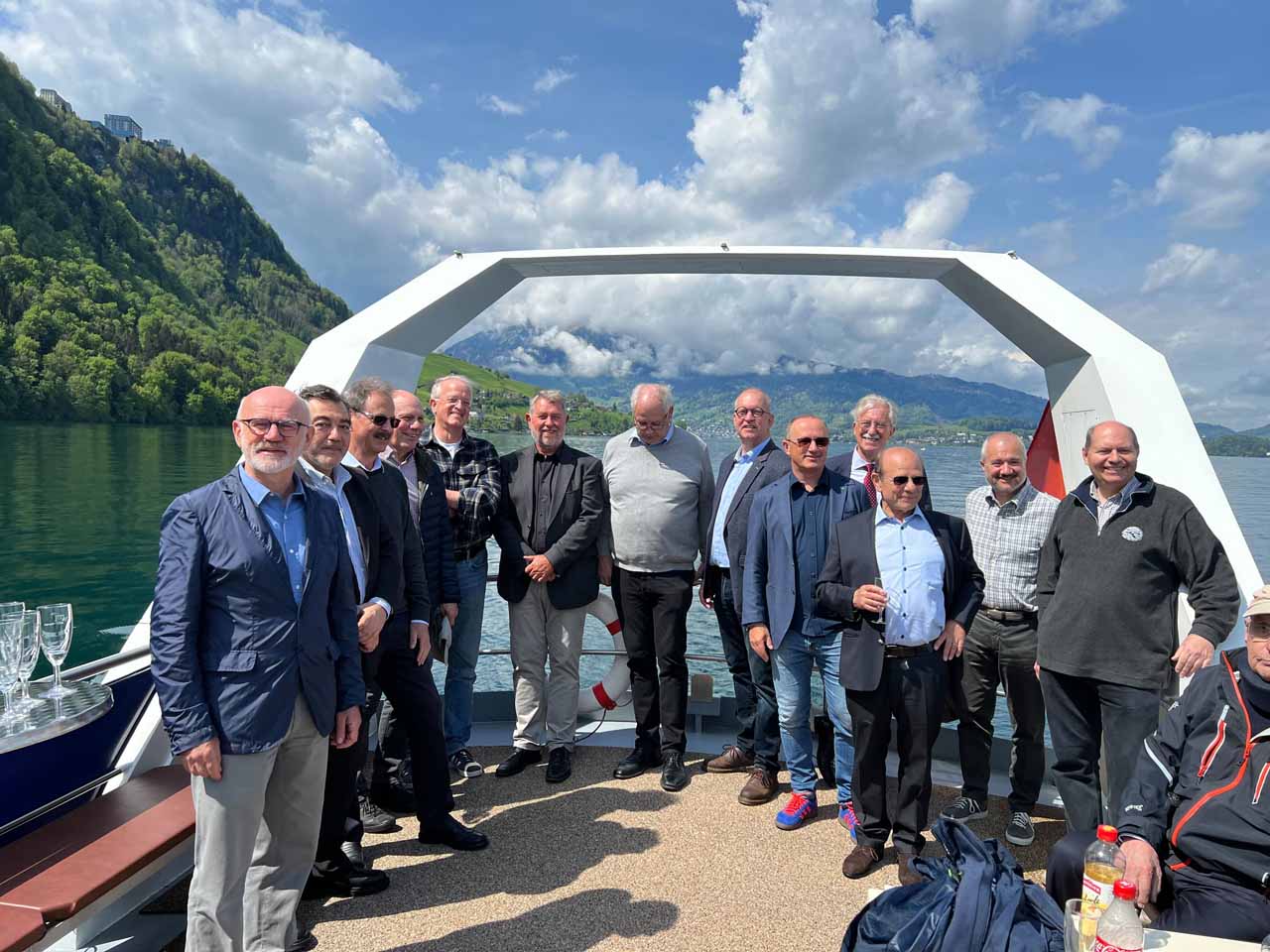
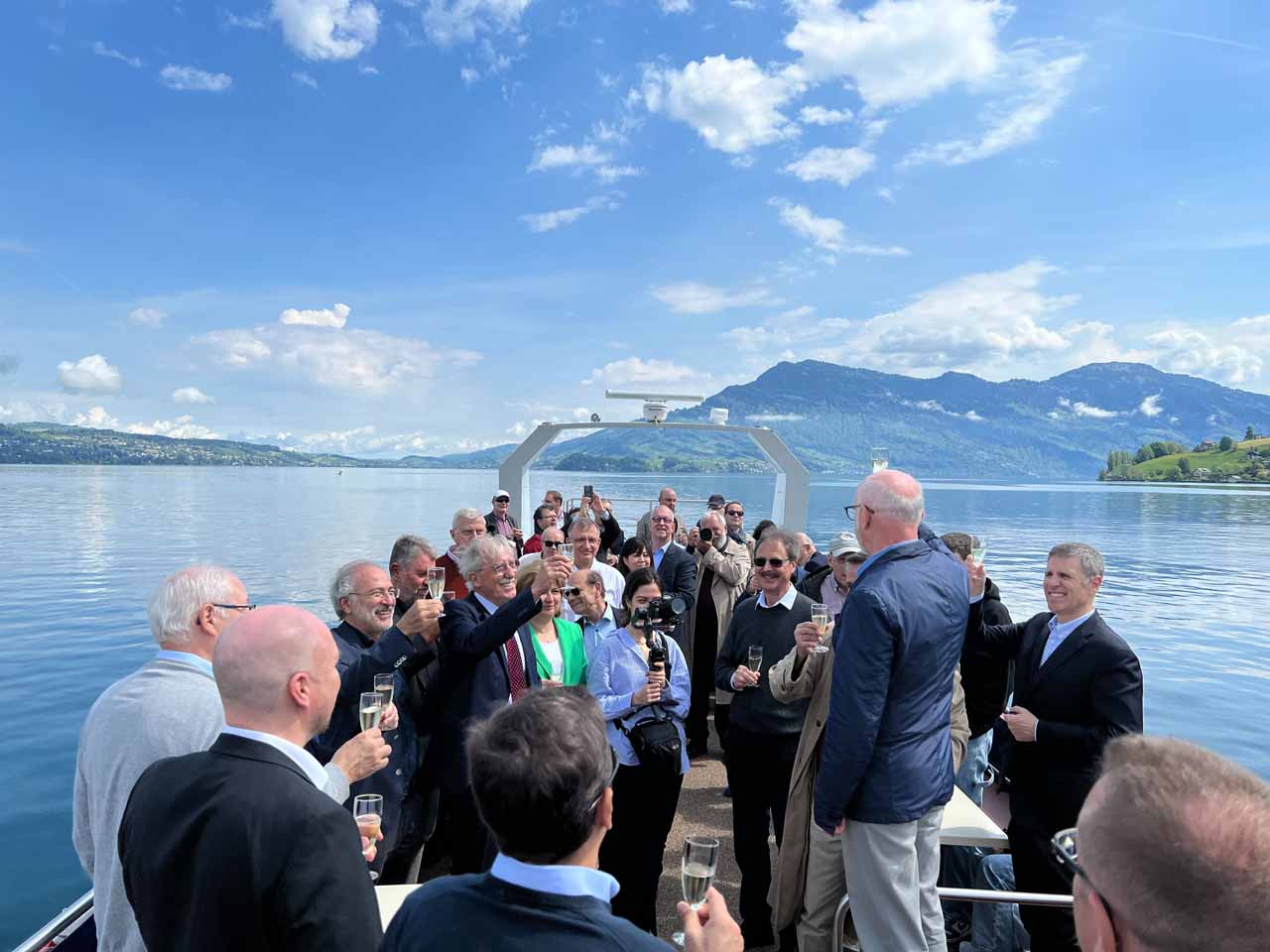
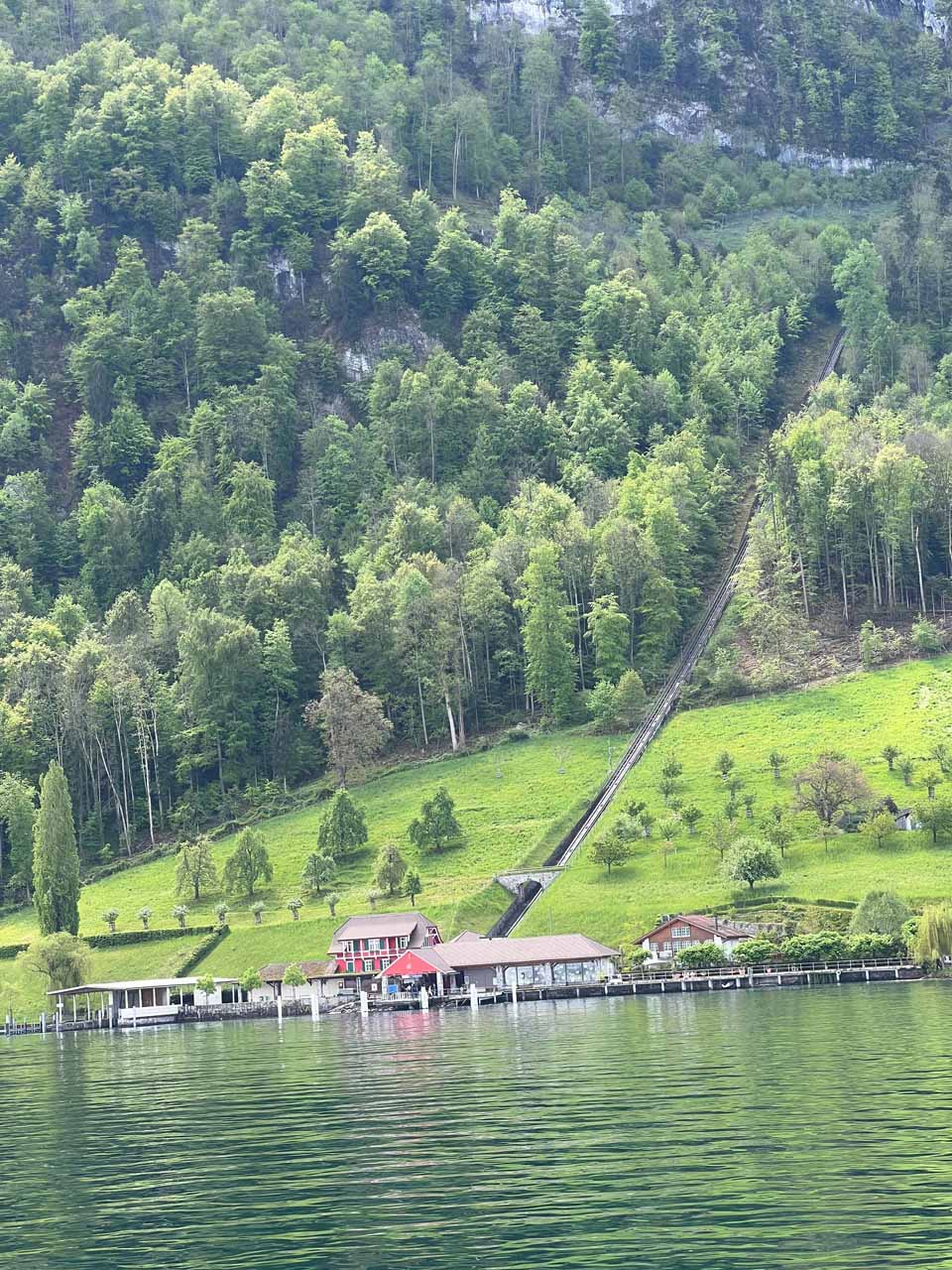
Get more of Elevator World. Sign up for our free e-newsletter.
